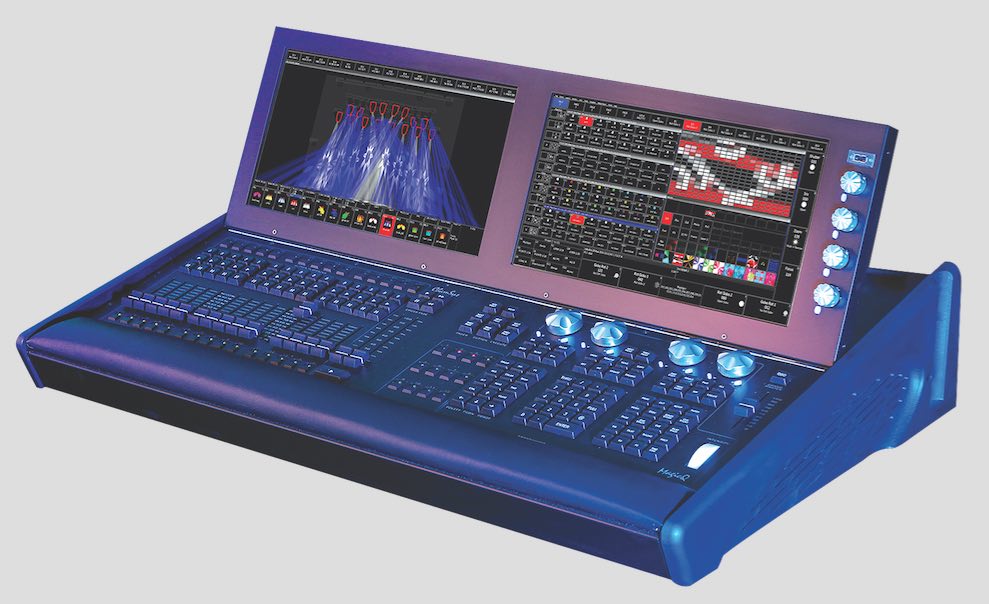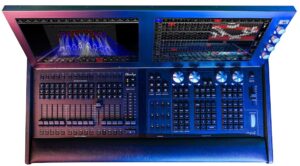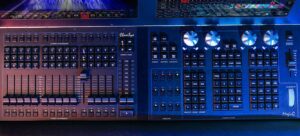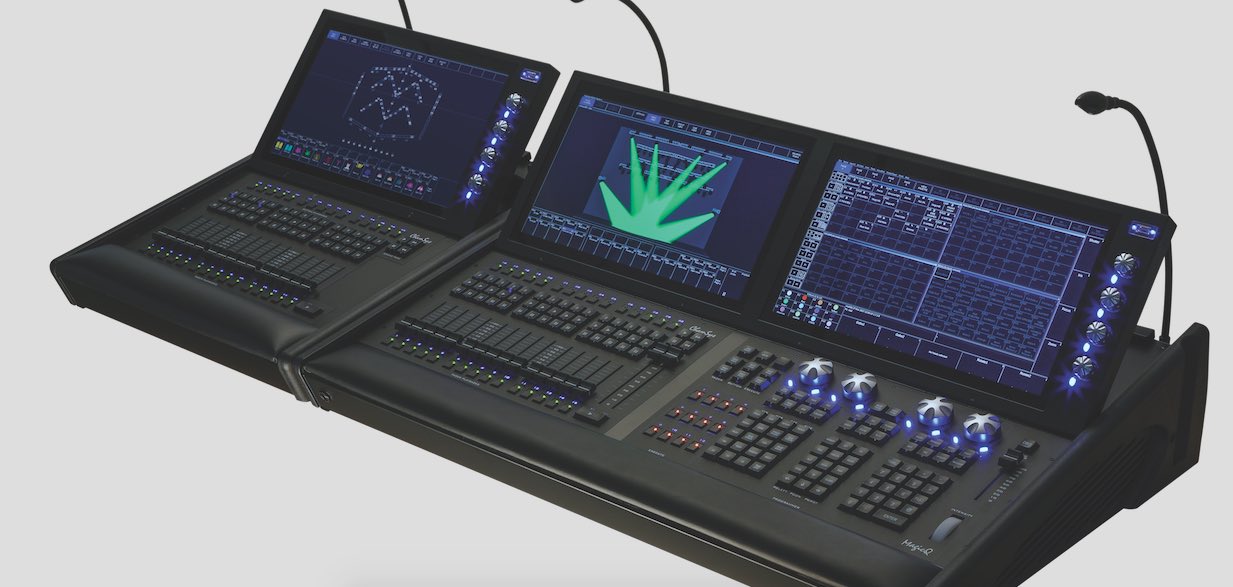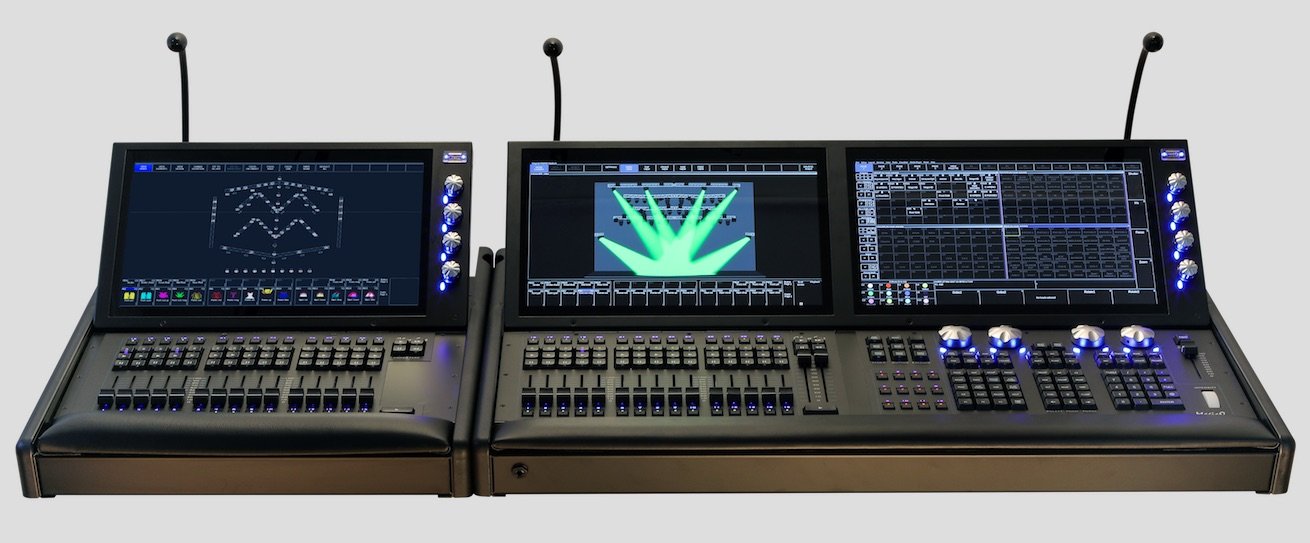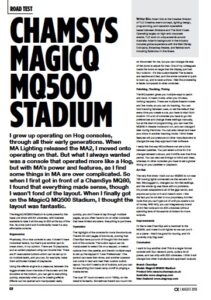News
24 Sep 2018
ChamSys MagicQ MQ500 Stadium
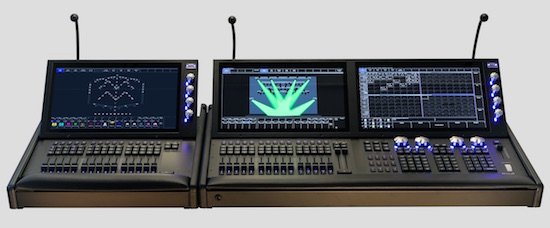
Subscribe to CX E-News
Road Test
ChamSys MagicQ MQ500 Stadium
by Adam Volz.
Adam Volz is the Creative Director of TLD Creative; event concept, lighting design, programming, and operation specialists based between Brisbane and The Gold Coast. Operating largely on high-end corporate events, TLD work on unique events around Australia. Adam’s background in the industry includes global experience with the Walt Disney Company, Broadway theatre, and festival work including Splendour in the Grass.
I grew up operating on Hog consoles through all their early generations. When MA Lighting released the MA2 I moved onto operating on that. But what I always wanted was a console that operated more like a Hog but with MA’s power and features as I find some things in MA are over complicated. So when I first got in front of a ChamSys MQ80 I found that everything made sense though I wasn’t fond of the layout. When I finally got on the MagicQ MQ500 Stadium I thought the layout was fantastic.
The MagicQ MQ500 Stadium is quite powerful; the base unit ships with 64 universes with licenses available to take it all the way to 200 at the top of the line. Its price-point and functionality make it a very affordable console.
Ergonomics
Physically, it’s a nice console to use. It doesn’t have motorised faders but that’s just another part to break down in my opinion. There are 15 playbacks and an added playback wing can double that. There are 31 executable buttons which can be set up to do multiple tasks, and you can, for example, make them attributes instead of playbacks.
Using the effects engine is a pleasure; between the toggle wheels down the side of the screen and the encoders at the bottom you can get to everything quickly especially when you’re creating effects. Effects can be opened and manipulated really quickly; you don’t have to tap through multiple pages as you often have to do on other consoles that have limited encoders. Everything is just there.
Operation
The highlight of the console for me is the shortcuts. There’s 30-odd pages of shortcuts proving that ChamSys have put a lot of thought into the back-end of the console. The button layout can be manipulated to select IDs on a keypad, or select options from the palette, and there’s multiple ways to set up the keypad in ‘User Preferences’. One person can save their show, and another operator can come in next and load their custom button layout.
You don’t need a lot of buttons, and you can do everything from basic lamp on/off to pinging a media server.
The dual 15” touch screens run in 1080p, so the detail is fantastic. Sometimes there’s too much info on the screen for me, but you can change the size of the icons to adjust for that. One of my colleagues made the icons so large that the display just had four buttons – it’s that customisable!The screens are reactive and fast, and the whole console is quick to boot up, and to save a show. I feel the processing is faster compared to other consoles.
Patching, Tracking, Timing
The MQ system gives you multiple ways to patch and track. In basic mode, when you hit clear, nothing happens. There are multiple theatre modes and live mode, so you can do tracking. You can hold tracking between cues, or set the default that every time you create a cue, you have to start from scratch. On a lot of consoles you have to go into preferences and change these settings manually, but at the start of programming, you can load the MQ500 in theatre mode and run, and can change it later during the show.
You can also reload and save your show in another tracking mode. I think these features will put pressure on other manufacturers to change the way they approach their software.
I really like the way MQ software can set a time between palettes. You just select a time for it to change between colours, and it shifts over that time period. You can also set timings on blind and clear, whereas on other consoles you have to set a global timing on your palettes or playback.
Art-Net
The very first show I took out our MQ500 to run was 100 moving lights connected via the venue’s Art-Net. We plugged in, changed our Art-Net settings, and the whole rig was there with no problems. It’s proven adaptable to all of the gigs we do, and anyone can jump on it and make it work.
I like the fact you’re not tied in to a proprietary Art-Net node that you can’t get out of until you spend a lot of money. With MQ, you can integrate any brand of Art-Net node and do 200 universes without spending tens of thousands of dollars for more outputs.
Improvements
I’d like to see ChamSys add a trackball to the MQ500, and make it a bit lighter so we can put it on a plane – that’d be good for touring, and it’s currently only 2kg over!
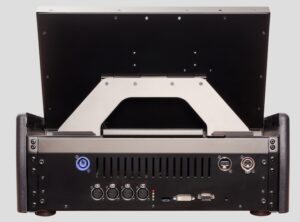 Conclusion
Conclusion
I want to buy another one! This is a larger format console with four network ports, quite a lot of power, and can ship with 200 universes. I think it will change how other manufacturers approach outputs.
Brand: ChamSys
Model: MagicQ MQ500 Stadium
Product Info: secure.chamsys.co.uk
Australia: www.ulagroup.com
New Zealand: www.ulagroup.com
ChamSys MagicQ MQ500 Stadium – The Specs
* Dual Inbuilt 15” displays
* Full HD 1920×1080 resolution
* Adjustable display viewing angle
* Multi touch with gesture support 200 universes direct from the console (licensed above 64)
* Inbuilt MagicVis Visualiser with full rendering of beams and gobos
* Inbuilt MagicHD Media Player for pixel mapping onto 200 universes
* Playback section with 30 Playbacks (15 full fader, 15 flash)
* 12 multi purpose Macro/Executes/Playbacks RGB function indication for every Playback
* Programming section with Intensity Wheel and 100mm crossfaders for Theatre
* Dedicated Grand Master fader and DBO button
* Dedicated Goto, Time, Head, Flip, Pair Buttons
This article first appeared in the September 2018 edition of CX Magazine – in print and online. CX Magazine is Australia and New Zealand’s only publication dedicated to entertainment technology news and issues. Read all editions for free or search our archive www.cxnetwork.com.au
© CX Media
Subscribe
Published monthly since 1991, our famous AV industry magazine is free for download or pay for print. Subscribers also receive CX News, our free weekly email with the latest industry news and jobs.

